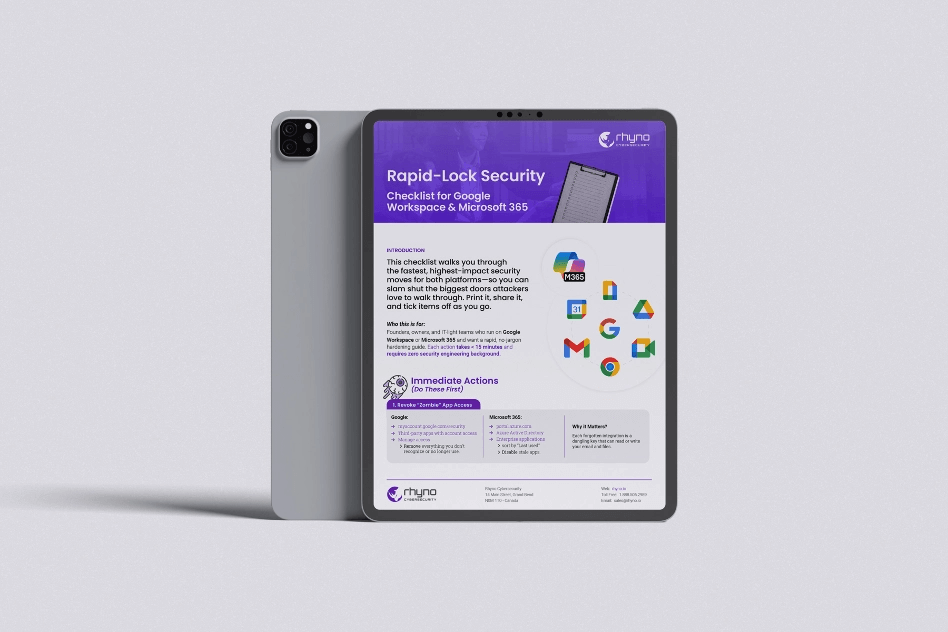Cybersecurity Audit | reveal potential vulnerabilites before hackers do.
Why a Cybersecurity Audit is Non-Negotiable for Ontario Businesses
Let’s be brutally honest: Ontario’s digital landscape is a goldmine for cybercriminals. We’re a major economic hub with diverse industries – finance, tech, manufacturing, healthcare, countless thriving SMEs. This concentration is catnip for attackers. Add in factors like stringent privacy laws (PIPEDA anyone?), the rise of remote work (hello, cottage country VPNs!), and our increasing reliance on interconnected systems, and you’ve got a recipe for potential disaster.
👉 Security Audits & Penetration Testing | Reveal potential vulnerabilites before hackers do. ⭐⭐⭐
Ignoring a cybersecurity audit is like leaving your front door wide open in a snowstorm – eventually, something cold and unwelcome is getting in. The consequences? Oh, they’re brutal:
-
Financial Carnage: Ransom demands (ransomware is rampant), recovery costs, regulatory fines (especially under PIPEDA for data breaches), crippling downtime, and soaring insurance premiums.
-
Reputation Wrecking Ball: Customers in Guelph, London, or Niagara Falls trust you with their data. Lose that trust? It’s incredibly hard, sometimes impossible, to get back. News of a breach travels faster than gossip in a small town.
-
Operational Paralysis: Imagine not being able to process orders, access customer files, or even use email for days or weeks. For many businesses, that’s a death sentence.
-
Legal Liability: Mishandling customer or employee data due to poor security isn’t just bad PR; it can land you in serious legal hot water.
So, what exactly is a cybersecurity audit? It’s far more than just running a quick virus scan. It’s a systematic, independent, and thorough examination of your entire IT ecosystem. Think of it as a detective meticulously combing through every digital nook and cranny to find vulnerabilities, misconfigurations, outdated software, weak passwords, risky user behaviours, and gaps in your policies. It assesses how well your current security measures align with industry best practices (like NIST or ISO 27001) and, crucially, with your specific business risks and compliance requirements here in Canada.
The Core Pillars of a Rock-Solid Cybersecurity Audit
A robust cybersecurity audit doesn’t just glance at the surface; it dives deep. Here’s a breakdown of the critical areas a thorough audit (like the ones we conduct at Rhyno Cybersecurity for our clients) will cover:
| Audit Area | What It Examines | Why It Matters for Businesses |
|---|---|---|
| Network Security | Firewalls, intrusion detection/prevention (IDS/IPS), network segmentation, Wi-Fi security. | Protects the digital “highway” into your business from external threats. |
| Endpoint Security | Laptops, desktops, mobile devices, servers – antivirus, anti-malware, patching status. | Secures the individual devices accessing your network, especially remote ones. |
| Data Security | How sensitive data (customer info, financials, IP) is stored, accessed, encrypted, backed up. | Critical for PIPEDA compliance and protecting your most valuable assets. |
| Identity & Access Mgmt (IAM) | User accounts, password policies, multi-factor authentication (MFA), privilege levels. | Ensures only the right people have access to the right things. |
| Vulnerability Management | Regular scanning for unpatched software, misconfigurations, known security holes. | Proactively finds and fixes weaknesses before attackers exploit them. |
| Policy & Procedure | Documentation of security policies, incident response plans, employee training logs. | Provides the roadmap for secure operations and proves due diligence. |
| Physical Security | Server room access, device theft prevention, visitor protocols. | Often overlooked! Protects the tangible hardware your data lives on. |
But it’s not just about ticking boxes! A truly valuable cybersecurity audit goes beyond the technical checklist. It considers your unique business context:
-
Your Industry: A manufacturer in Windsor faces different threats than a law firm in downtown Toronto or a healthcare provider in Ottawa. The audit must reflect that.
-
Your Size & Complexity: A 10-person startup needs a different approach than a 200-person established enterprise.
-
Your Tech Stack: Cloud-heavy? On-premise servers? Hybrid? The audit scope adapts.
-
Your Risk Appetite: How much risk are you, realistically, willing to accept?
The Nuts and Bolts: What Happens During a Cybersecurity Audit?
Okay, so you’ve decided an audit is essential. Smart move! But what does the process actually look like? While specifics can vary, especially based on the depth (vulnerability assessment vs. full penetration test vs. comprehensive audit), here’s a general flow for a standard cybersecurity audit:
-
Planning & Scoping (The Blueprint): This is where we (or your chosen auditor) sit down with you. We define the goals: What are your biggest fears? What systems are absolutely critical? What regulations must you comply with (PIPEDA, industry-specific)? We agree on the scope – what’s in, what’s out. This ensures the audit is focused and delivers maximum value for you.
-
Information Gathering (The Recon): The auditor collects documentation – network diagrams, security policies, asset inventories, previous audit reports. They might also use automated tools for initial network discovery and scanning. It’s like gathering the maps before the expedition.
-
Testing & Evaluation (The Deep Dive): This is the meat of it. Using a combination of automated scanning tools and manual expert analysis, the auditor probes your defenses:
-
Scanning for known vulnerabilities in systems and software.
-
Checking firewall and router configurations.
-
Testing password strengths and MFA implementation.
-
Reviewing access control lists and user permissions.
-
Assessing backup procedures and disaster recovery plans.
-
Evaluating the effectiveness of security awareness training (often through simulated phishing tests!).
-
Examining physical security controls.
-
-
Analysis & Reporting (The Diagnosis): All the findings are compiled, analyzed, and prioritized based on risk level (Critical, High, Medium, Low). Crucially, a good report doesn’t just list problems; it provides clear, actionable recommendations for fixing them. Think of it as your personalized security roadmap.
Turning Findings into Action: Your Remediation Roadmap
So, you’ve got your cybersecurity audit report. It might feel overwhelming at first glance – pages detailing vulnerabilities, misconfigurations, and policy gaps. Don’t panic! The key is prioritization and planning. Think of it like fixing up an old house: you tackle the leaky roof before repainting the porch.
-
Understand the Risk Pyramid: A good audit report categorizes findings by risk level (Critical, High, Medium, Low). Your immediate focus must be the Critical and High-risk items. These are the gaping holes in your defenses – unpatched critical systems, exposed sensitive data, missing MFA on admin accounts. Fixing these is non-negotiable and urgent. Medium and Low risks are important too, but they can be scheduled systematically.
-
Develop a Phased Remediation Plan: Trying to fix everything at once is a recipe for burnout and failure. Work with your IT team or your cybersecurity partner (like us at Rhyno!) to create a realistic, phased plan:
-
Phase 1 (Immediate – Days/Weeks): Eradicate Critical & High risks. Patch those servers! Isolate that vulnerable system! Enforce MFA now!
-
Phase 2 (Short-Term – Weeks/Months): Tackle Medium risks and implement foundational improvements. Update firewall rules, review and tighten user access permissions, formalize that incident response plan.
-
Phase 3 (Ongoing – Continuous): Address Low risks, refine policies, enhance monitoring, and build your security culture. This is maintenance and maturity.
-
-
Assign Clear Ownership: Every action item needs an owner and a deadline. Ambiguity kills progress. Whether it’s your internal IT lead, a specific department head, or your Rhyno Cybersecurity point person, clarity is king.
-
Resource Realistically: Be honest about your internal capabilities and budget. Some fixes might require external expertise or investment in new tools. Don’t let perfect be the enemy of good – start where you can and build momentum.
Remember: The goal isn’t perfection overnight. It’s continuous, measurable improvement based on the cybersecurity audit‘s objective baseline.
Building Your Human Firewall: Training & Culture
Here’s a hard truth no tech can fix: Your employees are often your weakest link OR your strongest defense. Phishing scams, weak passwords, accidental data sharing – these human factors are goldmines for attackers. Your cybersecurity audit likely highlighted gaps in awareness or risky behaviours.
Building a “Human Firewall” is absolutely critical:
-
Regular, Engaging Training: Ditch the boring, annual compliance checkbox session. Use engaging, scenario-based training (think simulated phishing attacks tailored to your industry!) that happens frequently. Make it relevant to their daily work in Hamilton factories, London offices, or Kingston healthcare settings.
-
Clear Policies (That People Understand & Follow): Your audit probably found outdated or ignored policies. Revise them! Make them clear, concise, and easily accessible. Explain the why behind the rules – people are more likely to comply when they understand the risk (“Clicking that link could encrypt all our patient records and shut us down for weeks”).
-
Foster a “See Something, Say Something” Culture: Employees should feel psychologically safe reporting suspicious emails or potential mistakes without fear of blame. Make reporting channels easy and encourage vigilance. Celebrate those who catch phishing attempts!
-
Leadership Buy-in is Non-Negotiable: Security culture starts at the top. When leadership in Barrie or Waterloo prioritizes and participates in training, follows protocols, and talks about security, it sends a powerful message.
Your people aren’t just risks; they’re your first line of reconnaissance and response. Invest in them.
The Power of Preparation: Incident Response Planning
Here’s a sobering thought: It’s not if you’ll face an incident, but when. Your cybersecurity audit assesses your preparedness. Finding you had no formal plan? That’s a critical vulnerability in itself.
A robust Incident Response Plan (IRP) is your business continuity lifeline:
-
Define Your Team (RACI Model): Who does what when the sirens blare? Clearly define roles (Responsible, Accountable, Consulted, Informed) for technical response, communications, legal, management. Include contact details (including after-hours!).
-
Outline Clear Procedures: Step-by-step guides for different scenarios (ransomware, data breach, DDoS attack). How do you contain the incident? Eradicate the threat? Recover systems? Preserve evidence?
-
Communication Strategy: This is HUGE. Who communicates with employees, customers, regulators (like the Office of the Privacy Commissioner of Canada for PIPEDA breaches), law enforcement, and the media? What are the key messages? Speed and transparency (within legal boundaries) are crucial for trust.
-
Practice Makes Perfect (Tabletop Exercises): Don’t let your IRP gather dust. Run simulated attack scenarios (tabletop exercises) with your team regularly. It reveals gaps, improves coordination, and reduces panic when the real thing hits. Imagine practicing a ransomware attack scenario specific to your Niagara-based manufacturing ERP system.
Having a tested IRP means the difference between contained chaos and catastrophic meltdown.
Beyond the Audit: Continuous Vigilance is Key
Think of your cybersecurity audit as a snapshot in time – a vital one, but still just a moment. The threat landscape evolves daily. New vulnerabilities emerge. Attackers refine their tactics. Your business changes – new software, new employees, new processes.
True security requires continuous effort:
-
Ongoing Vulnerability Management: Regularly scan your systems (weekly/monthly) for new vulnerabilities. Patch promptly! This is basic hygiene.
-
Continuous Monitoring (SIEM/SOC): Implement tools and processes (like Security Information and Event Management) to constantly watch for suspicious activity on your network. For many SMEs, partnering with a Managed Security Service Provider (MSSP) offering 24/7 Security Operations Center (SOC) monitoring is the most cost-effective way to achieve this.
-
Regular Policy Review & Updates: Revisit your security policies at least annually, or whenever significant changes occur in your business or the threat landscape.
-
Annual or Biannual Cybersecurity Audits: Schedule your next cybersecurity audit! This isn’t a one-and-done. Regular audits (annually, or after major changes) measure your progress, uncover new risks, and ensure your defenses keep pace with evolving threats and compliance requirements. It’s your ongoing health check.
Why Partner with Rhyno Cybersecurity for Your Audit & Beyond?
Look, we get it. Cybersecurity feels complex, expensive, and frankly, overwhelming for many businesses focused on serving their communities and growing. You’re experts in your field, not necessarily in defending against sophisticated cyber threats. That’s where we come in.
At Rhyno Cybersecurity, based right here in Ontario, we’re not just tech geeks (though we are that too!). We’re your local partners in resilience. We speak your language and understand the unique pressures facing businesses – from PIPEDA compliance to the challenges of distributed workforces across this vast province.
Here’s how we make your cybersecurity audit and journey smoother:
-
Deep Ontario & Canadian Expertise: We know the local regulations, the common threats targeting our region, and the specific challenges faced by different industries.
-
Truly Comprehensive Audits: We go beyond automated scans. Our audits combine cutting-edge tools with expert manual analysis and a deep understanding of business context.
-
Actionable, Prioritized Reporting: No jargon-filled overwhelm. We give you a clear roadmap focused on fixing what matters most to your business.
-
Practical Remediation Support: We don’t just hand you a report and vanish. We help you understand it, prioritize it, and can assist with implementing solutions – whether it’s configuring firewalls, rolling out MFA, or crafting policies.
-
Ongoing Partnership: From audit to implementation, training, monitoring, and your next audit, we’re here for the long haul. Think of us as your outsourced cybersecurity department.
cybersecurity audit
A cybersecurity audit is the indispensable foundation of any effective security strategy. It provides the objective truth about your current posture, shining a light on hidden vulnerabilities and compliance gaps before attackers exploit them. For businesses navigating an increasingly hostile digital world, coupled with stringent privacy laws, it’s not just best practice – it’s fundamental operational due diligence. It transforms security from a reactive cost center into a proactive, strategic advantage that protects your bottom line, your reputation, and your customers’ trust. Ignoring it is simply too great a gamble.
Fortify Your Future: Take Action Today!
The path to true cybersecurity resilience for your business starts with that crucial first step: the cybersecurity audit. It’s the map that shows you where the dangers lie and guides you towards building that impenetrable fortress.
Don’t wait for the knock of ransomware or the sting of a data breach. The threats are real, they’re here, and they’re targeting businesses just like yours across our province every single day.
Ready to move from vulnerability to victory?
👉 Contact Rhyno Cybersecurity today for a confidential consultation. Let’s discuss how a comprehensive cybersecurity audit tailored to your business can be your launchpad to a more secure, confident, and resilient future. We’re here to help you protect what you’ve built.


